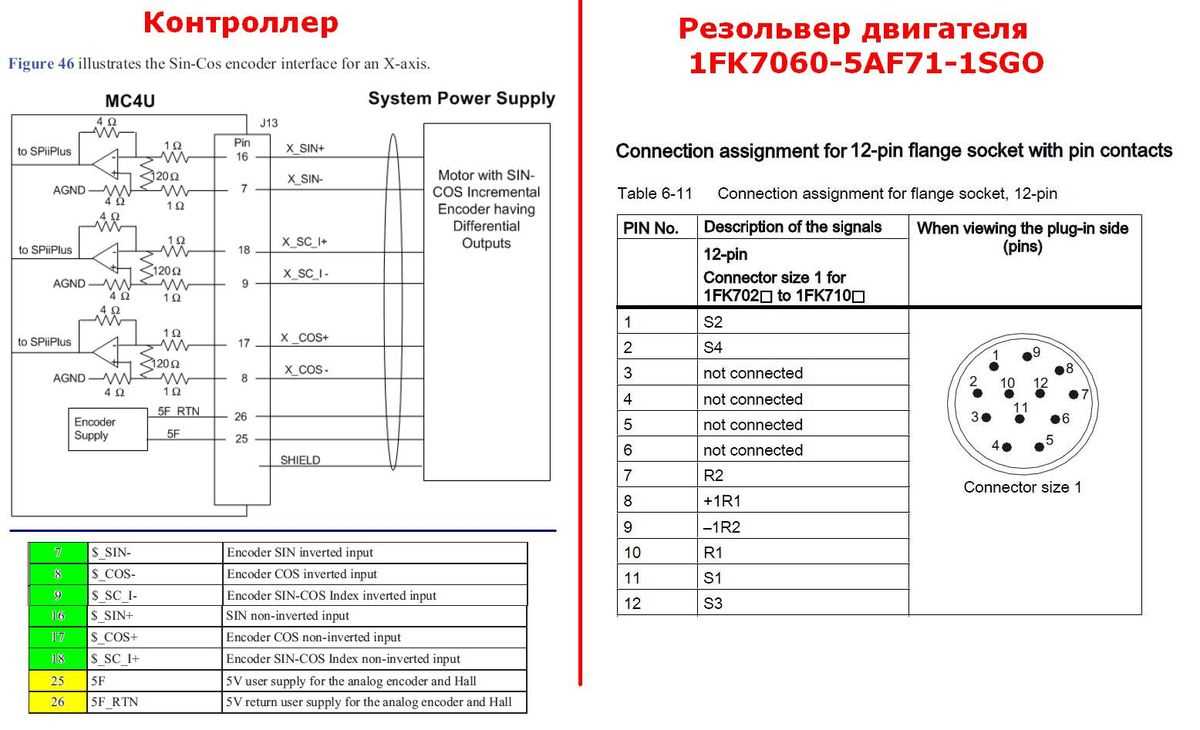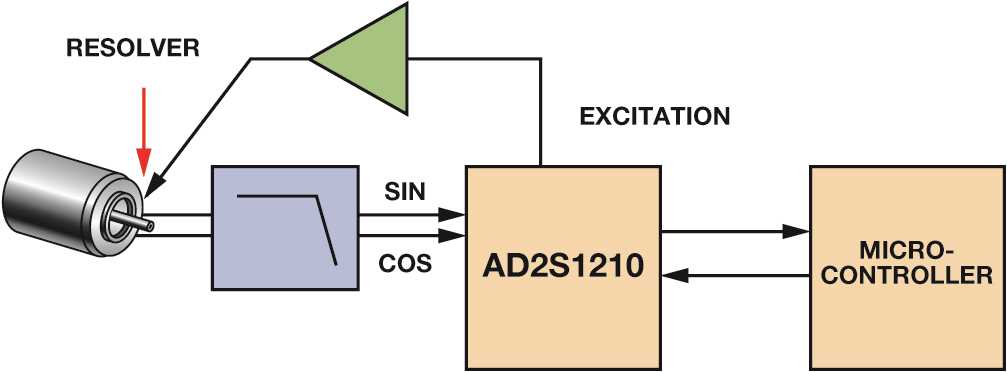
When it comes to precision motion control systems, the key to their reliability lies in the accuracy and efficiency of the components used. One such critical component is the resolver, a device that plays a vital role in converting mechanical motion into electrical signals. This article aims to shed light on the workings of a resolver and its importance in various industries.
Enabling precise measurement and monitoring
Resolvers, also known as angle resolvers or rotary transformers, are widely used in applications that demand high precision and accuracy in motion control. Whether it’s in aerospace, industrial machinery, or robotics, resolvers provide an invaluable means of measuring and monitoring the angular position, velocity, and direction of rotating objects.
By employing electromagnetic induction principles, resolvers facilitate the conversion of physical motion into electrical signals that can be accurately interpreted and utilized by motion control systems.
Unparalleled durability and resistance
The effectiveness of a resolver lies not only in its ability to accurately measure motion but also in its durability and resilience to harsh environmental conditions. Unlike other position sensing devices, such as optical encoders, resolvers are not susceptible to damage caused by shock, vibration, or extreme temperatures.
This robustness allows resolvers to operate flawlessly even in the harshest environments, making them an ideal choice for applications that demand reliability and longevity.
Enhancing system performance and efficiency
By providing real-time feedback on motion parameters, resolvers enable precise control and positioning of moving parts. This leads to enhanced system performance, improved operational efficiency, and reduced downtime. Moreover, the inherent analog nature of resolver signals ensures smooth and continuous motion, minimizing any potential jerks or errors.
With their ability to deliver accurate and reliable motion feedback, resolvers prove to be invaluable components in various industries, enabling smooth operation and precise control in even the most demanding applications.
In the following sections, we will delve deeper into the working principles, construction, and applications of resolvers, providing a comprehensive understanding of this essential component in the world of motion control systems.
What is a Resolver Datasheet?
In the realm of technical documentation, a resolver datasheet serves as a valuable resource for engineers, technicians, and researchers. This section aims to shed light on the significance and purpose of a resolver datasheet, exploring how it can assist in various applications and industries.
A resolver datasheet provides comprehensive information about a resolver, a device commonly used in electrical systems to determine the position, speed, and direction of rotating machinery. It offers detailed specifications, performance characteristics, and functionality explanations, enabling users to make informed decisions and ensure compatibility with their specific requirements.
- Understanding the device: A resolver datasheet offers insights into the composition and structure of a resolver, explaining how it operates and interacts with other components in a system. It covers key aspects such as the resolver’s physical dimensions, electrical connections, and signal output formats.
- Performance evaluation: By presenting data on accuracy, resolution, linearity, and temperature range, a resolver datasheet allows engineers to assess the device’s performance capabilities and determine whether it meets the desired standards for their particular application.
- Application suitability: With information on factors like input voltage, frequency response, and environmental considerations, a resolver datasheet aids in identifying the suitability of the device for different applications. It enables users to evaluate its compatibility with specific electrical systems and operational conditions.
- Integration possibilities: Apart from providing technical specifications, a resolver datasheet may also include details on compatibility with different interfaces or communication protocols, facilitating smooth integration with existing systems and supporting seamless data exchange.
- Comparative analysis: In certain cases, resolver datasheets may offer comparative data, allowing users to assess the strengths and weaknesses of different resolver models. This information is critical for selecting the most suitable resolver for a particular project or application.
In conclusion, a resolver datasheet acts as a vital tool in understanding, evaluating, and selecting a resolver for diverse applications. Its comprehensive information and technical details empower engineers and technicians to make informed decisions, ensuring optimal performance and compatibility in their electrical systems.
Understanding the Basics and Importance
When it comes to navigating and deciphering complex technical information, it is essential to understand the basics and importance of the topic at hand. In the context of resolver datasheets, gaining a solid grasp of the fundamentals and recognizing their significance is crucial for successful implementation and troubleshooting.
Importance of Understanding Resolver Datasheets
Resolver datasheets serve as a valuable resource for engineers, technicians, and individuals involved in various industries where resolver technology is utilized. These documents contain key information about the specifications, performance characteristics, and operating principles of resolvers, which are electromechanical devices used for position and motion sensing.
By understanding resolver datasheets, professionals can make informed decisions about selecting the most suitable resolver for their specific applications. Whether it is for robotics, aerospace, automotive, or industrial automation, the ability to interpret and analyze the data provided in datasheets is vital for ensuring optimal system performance and reliability.
Key Elements in Resolver Datasheets
Resolver datasheets typically include a range of information, organized in a structured manner, to provide comprehensive details about the specific resolver model. These elements may include:
- Electrical specifications: This section outlines the electrical characteristics of the resolver, such as voltage range, frequency response, and output signals.
- Mechanical dimensions: Here, you can find details about the physical dimensions, mounting options, and mechanical interfaces of the resolver.
- Environmental considerations: This section highlights the operating temperature range, environmental protection ratings, and other factors that can impact resolver performance in different conditions.
- Performance characteristics: These parameters include resolution, accuracy, linearity, and speed limitations, providing insights into the resolver’s capabilities and limitations.
- Connection diagrams: Datasheets often include clear diagrams illustrating how to connect the resolver to other components or circuits.
- Applications and recommended usage: Some datasheets may include examples of applications where the resolver is commonly used and offer guidance on the appropriate implementation.
By thoroughly reviewing and understanding these elements within resolver datasheets, users can effectively evaluate the compatibility and suitability of a resolver for their specific requirements. This knowledge empowers professionals to make informed decisions and optimize system performance through accurate selection and integration of resolvers.
Key Components of a Resolver Datasheet
In the documentation of a resolver datasheet, there are several important sections that provide valuable information about the resolver’s characteristics and specifications. These sections collectively contribute to an understanding of the resolver’s performance, functionality, and compatibility with other components in a system.
One essential component in a resolver datasheet is the electrical specifications section. This section outlines the electrical parameters of the resolver, including its voltage and current ratings, frequency response, and impedance characteristics. These specifications are crucial for ensuring the resolver can integrate smoothly with other electrical components in a system and perform optimally in a given operational environment.
Another significant component is the mechanical specifications section, which details the resolver’s physical dimensions, mounting options, and tolerance levels. This information is crucial for engineers and designers to determine the resolver’s suitability for a specific application and ensure seamless integration into the overall system architecture.
The environmental specifications section plays a vital role in determining the resolver’s ruggedness and reliability in various operating conditions. It provides information about temperature ranges, vibration and shock resistance, and sealing ratings. This information is essential for applications where the resolver may be subjected to harsh environmental conditions or where precise operation is required despite external disturbances.
Additionally, the performance characteristics section provides key insights into the resolver’s accuracy, resolution, linearity, and speed capabilities. This information is essential for understanding the resolver’s ability to provide precise measurements and control signals, enabling engineers to evaluate its suitability for specific applications and make informed decisions in system design.
Furthermore, the interfaces and connections section outlines the resolver’s electrical interface types, pin configurations, and signal protocols. This information is crucial for integration with control systems and other devices, ensuring compatibility, and facilitating seamless communication and data exchange between the resolver and other components in a system.
Lastly, the application examples or usage scenarios section showcases real-world applications where the resolver can be effectively employed. This section provides engineers and designers with practical ideas and insights into how the resolver can be applied in different industries and applications, helping them envision the resolver’s potential use cases and inspiring innovative solutions.
Overall, the key components of a resolver datasheet provide a comprehensive overview of the resolver’s electrical, mechanical, environmental, and performance characteristics, as well as its interfaces and potential applications. By carefully reviewing these sections, engineers and designers can make informed decisions about incorporating the resolver into their systems, ensuring optimal performance and compatibility.
An In-depth Analysis and Explanation

Delving deep into the intricacies and intricacies of the subject matter, this section aims to provide a thorough examination and clarification of the key concepts and underlying mechanisms, without explicitly referring to the Resolver datasheet. By exploring the intricacies of this technology, we seek to unveil its inner workings and shed light on its functionality, offering a comprehensive understanding of its purpose and significance. Through a meticulous examination of the subject matter, we will uncover the fundamental principles that drive this innovative solution, unraveling its complexities and providing valuable insights into its potential applications and benefits.
How to Interpret and Utilize a Resolver Datasheet
In this section, we will delve into the various methods and techniques for effectively understanding and implementing the information provided in a resolver datasheet. By gaining a solid comprehension of the datasheet’s content, engineers and technicians can extract vital details necessary for successful resolver integration and troubleshooting.
Deciphering Key Specifications

One of the first steps in interpreting a resolver datasheet is to analyze and interpret the key specifications. These specifications provide crucial information about the resolver’s electrical characteristics, performance parameters, and mechanical dimensions. It is essential to pay close attention to factors such as resolver accuracy, linearity, temperature range, and input/output impedance. Understanding these specifications will help ensure the resolver meets the specific requirements of the application at hand.
Understanding Connection Diagrams
Another critical aspect of a resolver datasheet is the connection diagram. This diagram illustrates the correct wiring and pin assignments required for successful integration of the resolver into an existing system. By studying the connection diagram closely, engineers can avoid potential wiring mistakes that may lead to inaccurate measurements or even damage to the resolver or other components.
Furthermore, connection diagrams often provide valuable information about different resolver configurations, including single-phase and multi-phase options. By understanding these configurations, engineers can select the most suitable configuration for the desired application and optimize the resolver’s performance.
Key Tip: It is essential to follow the manufacturer’s guidelines and recommended practices when connecting the resolver to ensure reliable operation and accurate measurements.
In conclusion, the interpretation and utilization of a resolver datasheet play a vital role in the successful implementation and integration of resolvers into various applications. By thoroughly analyzing the key specifications and studying the connection diagrams, engineers and technicians can make informed decisions and avoid potential issues, ultimately maximizing the performance and reliability of resolver systems.